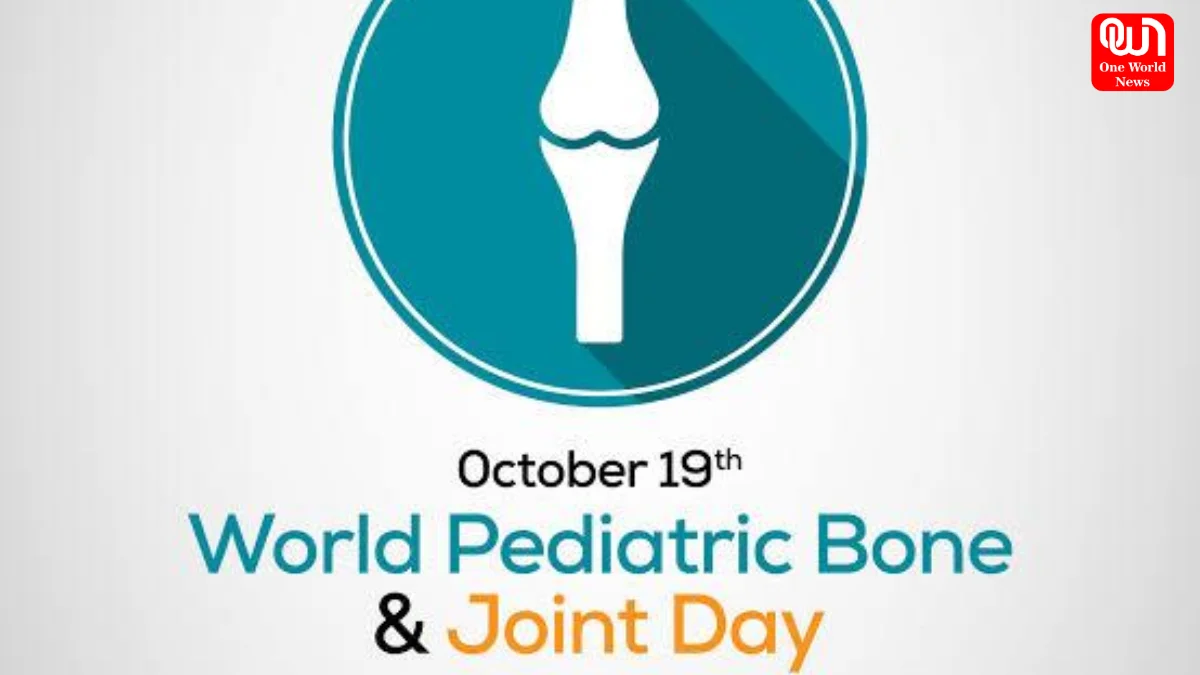Understanding World Pediatric Bone and Joint Day: Promoting Healthy Bones in Children
World Pediatric Bone and Joint Day highlights the importance of bone and joint health in children and encourages preventive care for lifelong mobility.
World Pediatric Bone and Joint Day: Raising Awareness About Children’s Bone and Joint Health for a Stronger Future
What is World Pediatric Bone and Joint Day
World Pediatric Bone and Joint Day is an international observance aimed at raising awareness about bone and joint health in children. It emphasizes early detection, preventive care, and treatment of musculoskeletal disorders to ensure a healthy and active childhood. The day encourages parents, caregivers, and healthcare professionals to focus on bone strength, joint flexibility, and overall musculoskeletal well-being in children.
Importance of Bone and Joint Health in Children
Healthy bones and joints are essential for a child’s growth, mobility, and overall physical development. Musculoskeletal issues can affect posture, movement, and even long-term health if left untreated. Early awareness and intervention can prevent complications such as fractures, deformities, or chronic joint pain. World Pediatric Bone and Joint Day highlights these aspects and motivates communities to take proactive steps.
Common Bone and Joint Issues in Children
Children are prone to certain bone and joint conditions that may impact their growth. Some common issues include growth plate injuries, scoliosis, juvenile arthritis, rickets due to vitamin D deficiency, and congenital deformities. Understanding the symptoms and seeking timely medical advice are crucial. Pediatric orthopedic specialists play a key role in diagnosing and managing these conditions to ensure healthy development.
Role of Parents and Caregivers
Parents and caregivers play a critical role in maintaining their child’s bone and joint health. Providing a balanced diet rich in calcium, vitamin D, and protein supports strong bones. Encouraging physical activity, such as running, swimming, or sports, enhances bone density and joint flexibility. Avoiding excessive screen time and promoting proper posture can prevent early musculoskeletal problems. World Pediatric Bone and Joint Day serves as a reminder for caregivers to prioritize these preventive measures.
Importance of Nutrition for Healthy Bones
Nutrition is a cornerstone of pediatric bone and joint health. Calcium, found in milk, yogurt, and leafy greens, helps build strong bones, while vitamin D aids calcium absorption. Proteins from eggs, fish, and legumes contribute to bone structure and repair. Including essential minerals such as magnesium and phosphorus further supports skeletal development. On World Pediatric Bone and Joint Day, awareness about nutritional needs is emphasized to help children grow with robust bones and joints.
read more: Celebrate Love and Kindness on Sweetest Day: A Heartwarming Tradition
Promoting Physical Activity
Regular physical activity strengthens muscles, improves bone density, and enhances joint function in children. Activities like cycling, jumping, swimming, and team sports not only build strong bones but also improve coordination and balance. Reducing sedentary habits is equally important. Observing World Pediatric Bone and Joint Day encourages schools, communities, and families to create safe spaces for children to remain active and develop lifelong healthy habits.
Role of Pediatric Orthopedists
Pediatric orthopedists are specialized doctors who diagnose and treat bone, joint, and musculoskeletal issues in children. They guide parents on proper growth monitoring, injury prevention, and corrective treatments when necessary. Early intervention can prevent long-term complications, making awareness about pediatric orthopedic care an essential aspect of World Pediatric Bone and Joint Day.
Preventive Measures and Safety Tips
Preventive measures play a crucial role in safeguarding children’s bone and joint health. Ensuring children wear protective gear during sports, maintaining safe home environments to prevent falls, and teaching correct lifting or carrying techniques reduce the risk of injuries. Routine check-ups help identify issues early. World Pediatric Bone and Joint Day promotes education and training for children, parents, and teachers on these safety practices.
Raising Awareness Through Community Programs
Communities worldwide celebrate World Pediatric Bone and Joint Day by organizing awareness programs, workshops, and health camps. Schools, hospitals, and non-profit organizations participate to educate parents and children about musculoskeletal health. Campaigns often include free screenings, interactive sessions, and exercise demonstrations to make the knowledge accessible and engaging.
Read more: Celebrating Bridge Day: A Thrilling Tribute to Adventure and Community
Conclusion
World Pediatric Bone and Joint Day is a significant observance that highlights the importance of musculoskeletal health in children. It serves as a reminder for parents, caregivers, and healthcare professionals to focus on preventive care, proper nutrition, and physical activity. By promoting awareness and education, this day ensures that children grow with strong bones and flexible joints, paving the way for a healthier, more active future. Celebrating and acknowledging this day helps build a generation of children who are physically resilient and free from preventable musculoskeletal disorders.
We’re now on WhatsApp. Click to join.
Like this post?
Register at One World News to never miss out on videos, celeb interviews, and best reads.








